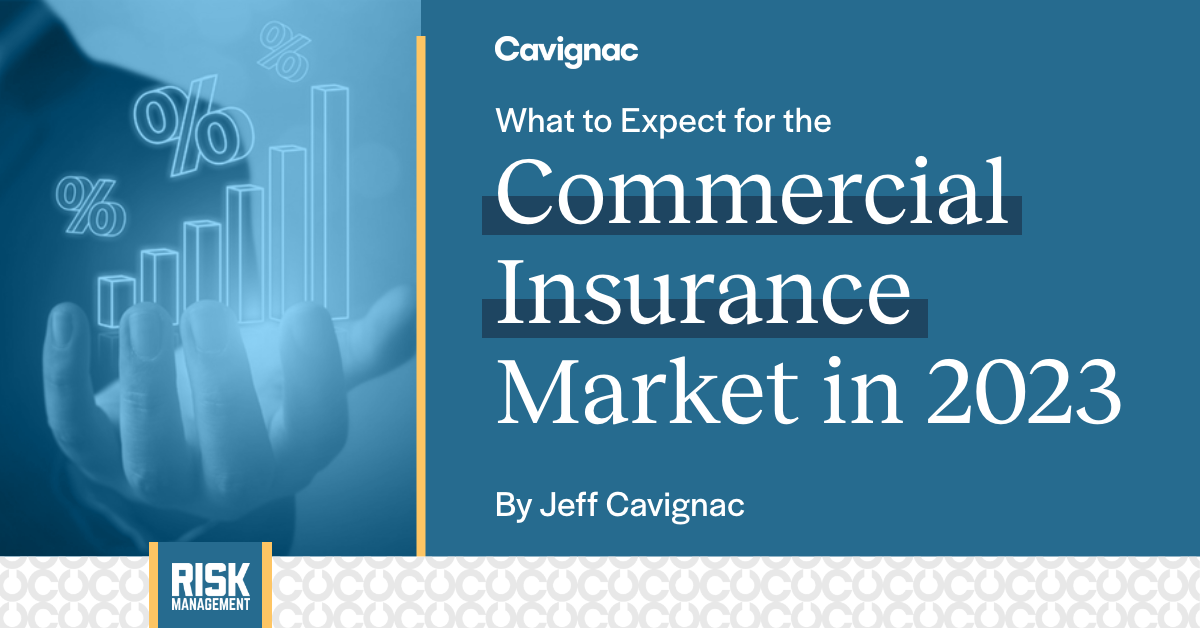This article originally appeared in Risk Management Magazine
The cost of insurance is a major expense item for most businesses. Looking forward to 2023, a number of factors will likely play a role in what a business will ultimately pay in premiums.
In 2022, the insurance industry’s combined ratio (losses and expenses divided by premiums) is forecast to be 100.7%. This is 1.2 points higher than 2021 and means that for every $100 the industry receives, they are paying out $100.70. The industry is still making a profit due to investment income, but they are not generating the returns they would like. Because of the current combined ratio, most insurance companies are seeking rate increases of 5% to 10% or more for some lines. However, the insurance market has a significant amount of surplus or available capital, which drives competition. While companies would like to raise prices, this competition serves as a moderating factor.
So, what can insurance buyers expect in 2023? Assuming similar exposures (payroll, property values and revenues) and a decent loss history, buyers should conservatively budget for a 10% rate increase. Every business is different, however, and some lines of coverage are doing better than others. The following is what you can expect for certain lines:
Property insurance in general has been flat to plus 10%. Certain properties are seeing significant increases, however. Anything remotely exposed to wildfire risk will see massive rate hikes. This affects both personal and commercial lines. Properties with wind-driven exposures are also difficult to insure. Wind and flood losses were high prior to Hurricane Ian, and that event alone is expected to cost the industry more than $50 billion with some experts have estimating as high as $100 billion. Expect flood premiums to go up significantly by 25% or more. Note that the replacement value of most properties has increased significantly due to inflation, s do not be surprised if your insurer insists on higher replacement cost values.
General liability insurance is experiencing modest increases. In general, you can expect flat to 5% rate increases. However, like all lines, this can vary. Some commercial construction and life science risks may actually see decreases, while certain habitational and hospitality businesses have seen double digit increases.
Auto insurance continues to be a challenge. Loss frequency has risen substantially due to distracted driving and the cost to fix a damaged vehicle has escalated with the addition of new technology like cameras and sensors. Loss severity has also escalated. On preferred auto schedules with good controls and a decent loss history, insurance buyers should budget for a 10% rate increase.
Excess (umbrella) coverage generally follows the general liability and auto pricing. Unfortunately, however excess layers have been hammered by social inflation that has resulted in escalating jury awards. Underwriters are commonly increasing their pricing by 25% or more while also restricting capacity. Once again, terms can vary greatly. Auto heavy risks will see higher pricing as will the habitational, hospitality and large retail sectors.
Workers compensation rates have been coming down for years. In 2014, the average charged rate in California was $3.24. This year it is $1.74—a 46% decrease. While major increases are not anticipated for 2023, the market is also not likely to go down any further. The combined ratio for this line of business has been steadily increasing. In 2016, the combined ratio bottomed out at 79%; currently it is at 112%. Buyers should budget for base rates to be up on average 5% this year. Other factors, like experience modification will also affect pricing.
Executive risk includes directors and officers (D&O) liability, employment practices and crime coverages. The market remains competitive with 5% to 10% average rate increases expected. The exception is public D&O, which is seeing flat renewals and, in some cases, rate decreases of 10% or more.
Cyber insurance has seen a deteriorating loss experience. For years, this coverage was underpriced, but now rates are going up and underwriting requirements are strict. Cyber insurance is volatile and the number of new players entering the market make it difficult to provide a general idea of what insurance buyers might expect on renewal. Based on recent experience, cyber insurance costs will likely go up 25% to 100% or more, so it is best to get an early read from your broker on your cyber program.
Professional liability insurance for your typical accountant, lawyer, architect or engineer remains in fairly good shape. There are a number of insurers competing for business and experience has been decent, but not great. Many insurers are seeking increases of 10% or more, but as mentioned above, competition is helping to soften this and most accounts are renewing at flat to plus 5%.
Every business has different exposures, business practices and loss histories, all of which will affect your insurance costs. Firms that invest in loss prevention, proactive HR practices and aggressive claims management are generally looked upon more favorably by the underwriting community. The importance of risk management in controlling insurance costs cannot and should not be overlooked. In the end, while some conclusions can be made based on a macro view of the insurance industry, the best way to budget appropriately for 2023 is to have a discussion with your insurance broker.


